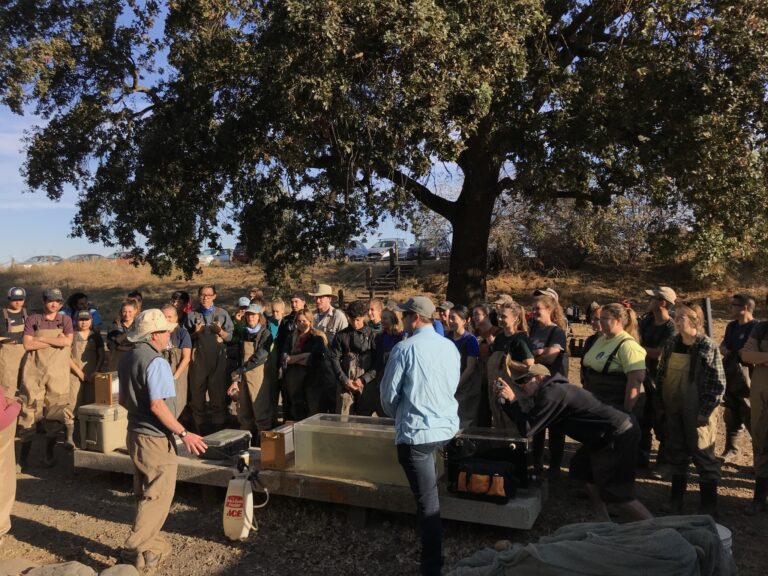It’s a curious thing, teaching a classroom of future fish conservationists about revitalizing degraded ecosystems. Putah Creek was an unconventional place to teach ecology. After the creek turned bad, it stayed that way for decades – deteriorated habitat, nonexistent flow, garbage, rusted cars, even gravel mining. And while conditions have improved, many students, and even some scientists, still remain skeptical that this ecosystem could ever be anything but a spoilt ecosystem. Is it really possible to genuinely rehabilitate an ecosystem like that through improved management and community building? Those lessons work in other cases, for other ecosystems, but surely not this one.
This blog explores the outcome of environmental stewardship over time, of patience and persistence that pays off, and of some extremely cool fishes you wouldn’t guess live in our local creek today. It’s a story that catches students, and even many members of the community, off guard. Those who have ties to the area, whether in growing up here or as UC Davis alumni, may vividly remember a time when the creek was a very different place.
Putah Creek Fish Sampling
On the crisp morning of November 4th, the UC Davis fish class (WFC 120) ventured on their annual field trip to Putah Creek, located just on the outskirts of campus. The most recent field trip expands a long-term student-generated dataset on Putah Creek spanning nearly 50 years. Students have spent most of this academic quarter learning about native and introduced fish species in California. A major goal of the course is cultivating an appreciation for the status of our fishes, and what we can do to protect them from extinction. Prior to this class, many of these students had never touched a fish before. The field trip is an opportunity to see local fish diversity up close, learn about our local watershed, and try a hand at different sampling methods. It is also a chance to tell the story of Putah Creek – a positive narrative about collaboration, team science, and diverse people uniting to successfully realize a shared vision.
Class leaders and representatives from the East Bay Park District demonstrate a variety of active (shoreline seining, boat electrofishing, backpack electrofishing) and passive (gill nets, minnow traps, clover traps) sampling techniques for the students (under an approved Scientific Collection Permit and IACUC protocol). These data also support a reliable inventory of the fishes in the creek (e.g., Table 1). Some fishes are more or less likely to be captured via a particular method; thus we use a suite of tools for more robust data collection. Fishes caught during the trip are identified, counted, measured, and returned to the creek. A subset of unique fishes are kept in accessible well-aerated aquaria for students to observe up close during the day, and to use for practicing common measurements on fishes. In addition to the students, we often also get to chat with […]
Full article: californiawaterblog.com

